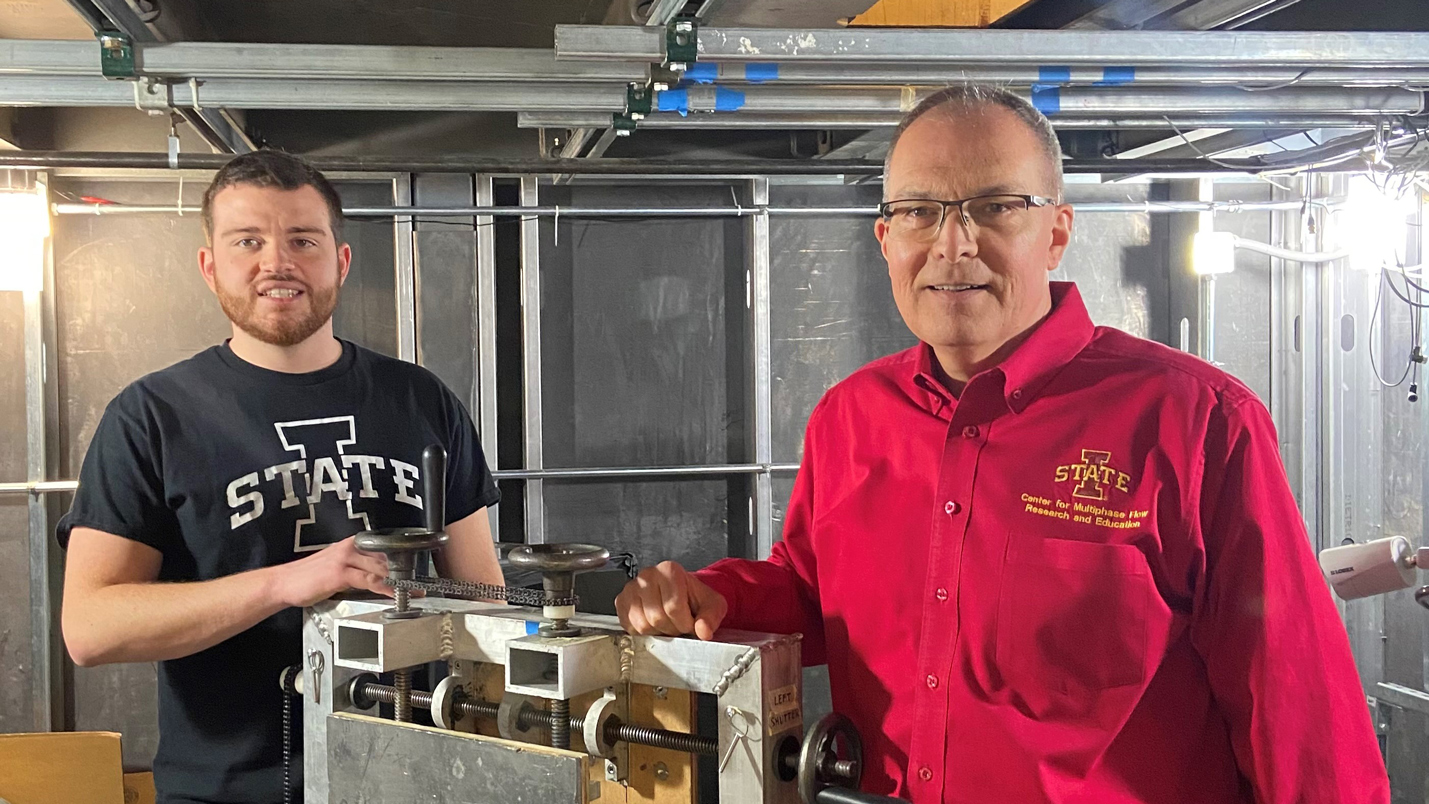Working in Ted Heindel’s multiphase flow lab as a mechanical engineering undergrad spurred Wyatt Curtis’ passion for research and paved the way for his decision to continue his educational path at Iowa State.
Today, Heindel is Wyatt’s major professor and remains a voice of clarity and guiding hand as Wyatt navigates the mechanical engineering doctoral program and autonomous research.
“I couldn’t ask for a better mentor,” Wyatt says. “It’s a good, deep relationship that I hope to deepen further as time progresses.”
Wyatt’s current project is deeply rooted in aerospace, and receiving the Dean’s Fellowship at the start of his doctoral program provided a crucial opportunity to review literature, align his research goals with available funding, and develop key foundational skills in the aerospace field.
“It gave me an opportunity to transition into my doctoral program without feeling pressured,” he says. “It reinforced that I’m going to be supported at Iowa State.”
Research aims to improve data on rocket launches, landings
Launching and landing rockets is a destructive process, both to the surrounding area and the rocket itself. The harsh nature of space exploration creates a challenging environment for data collection, limiting engineers’ ability to fully understand and better control these processes beyond theory and mathematical models.
Wyatt is developing a method to bridge theoretical models with real-world data collection. Where most who study plume-surface interaction focus only on the physical characteristics of the resulting crater, Wyatt is turning his attention to the ejective — the material propelled during the interaction. He simulates this interaction by employing a compressed gas-powered apparatus and captures data using x-ray flow visualization.
“No one has necessarily tried to use x-ray flow visualization to visualize crater formation non-invasively,” Wyatt says. “But you gain more data related to width and depth, before and after surface demography and so forth of the crater.”
Wyatt appreciates the flexibility and the competitive but collaborative culture on campus that made his path possible; “I’m definitely proud to say that I got my engineering degree at Iowa State.”

